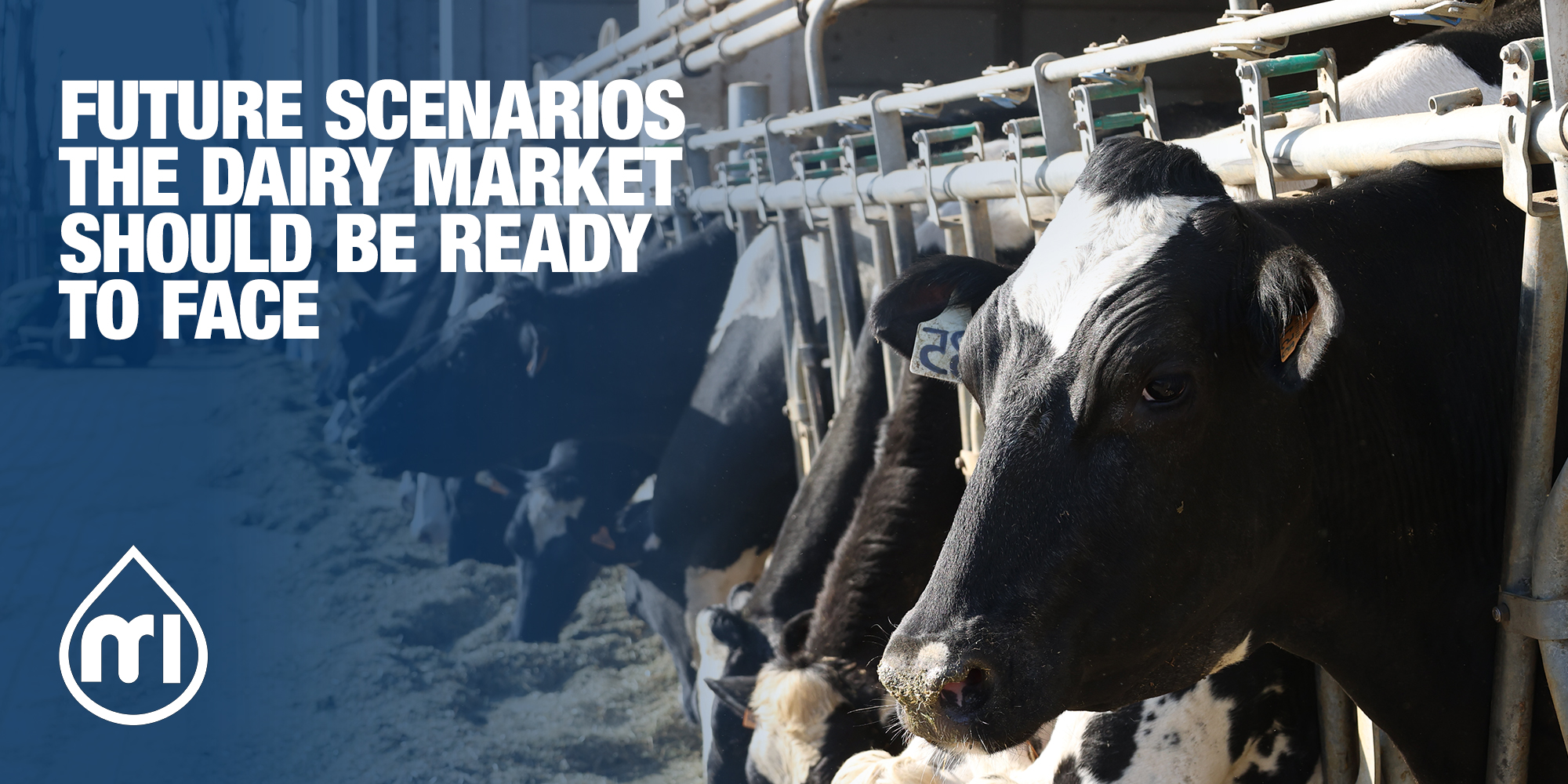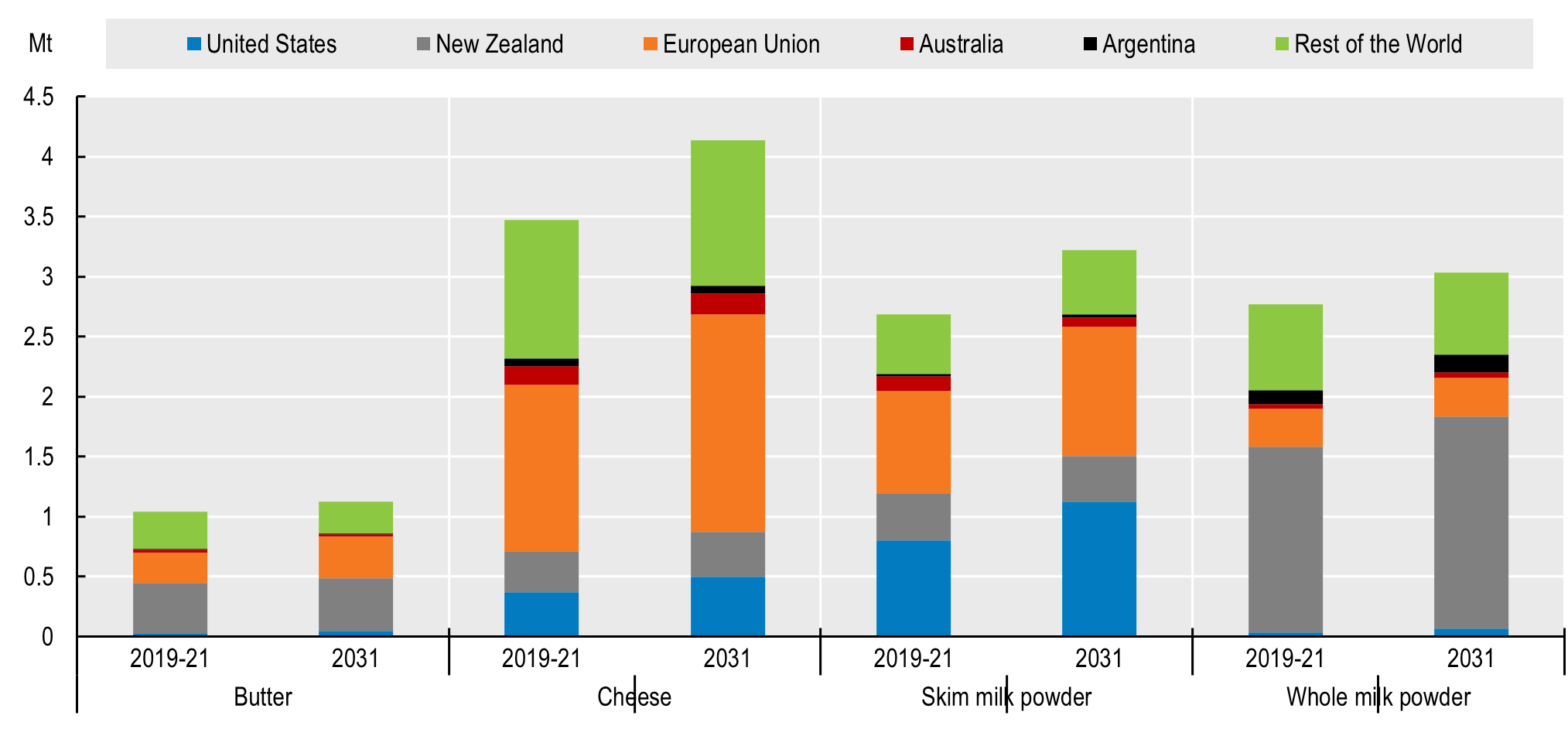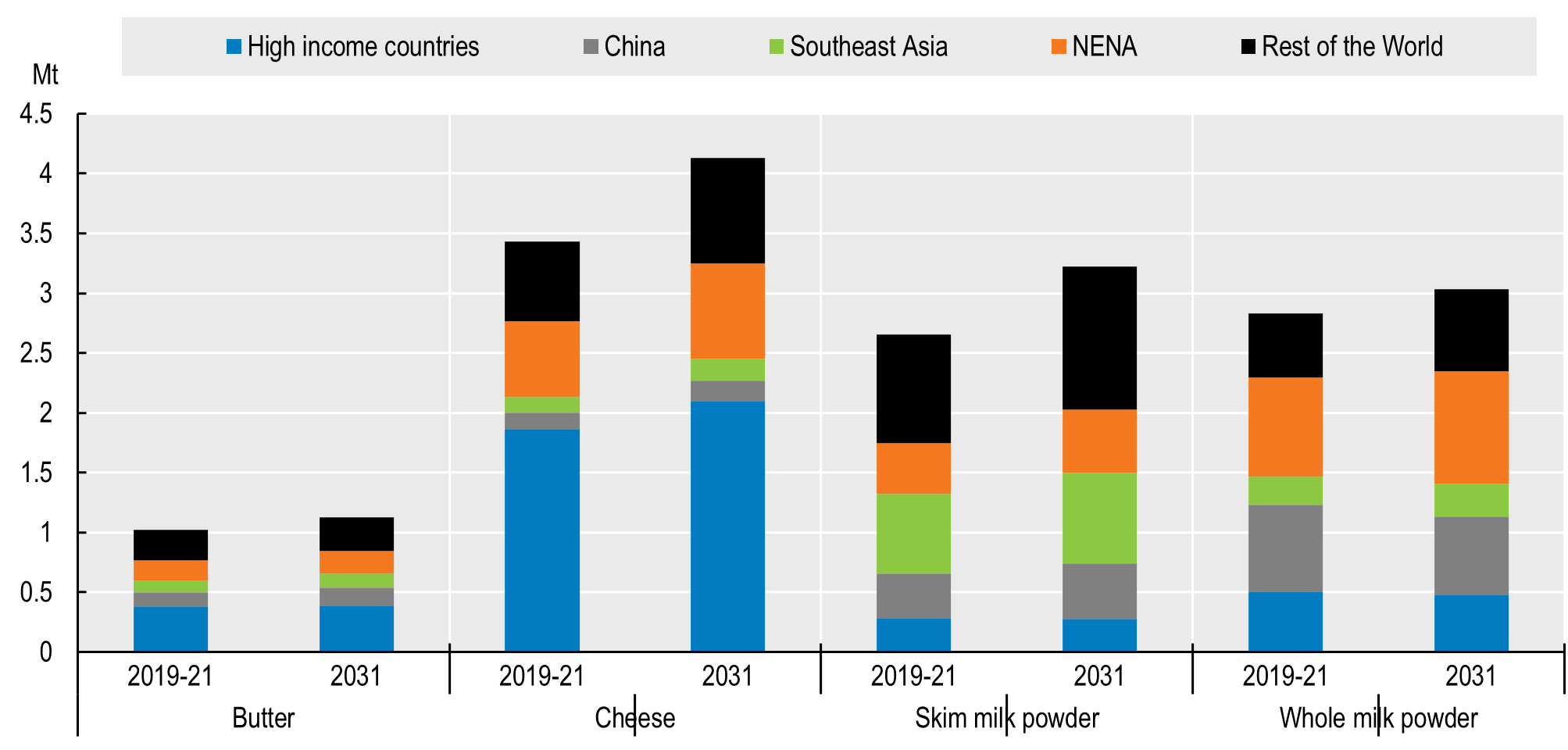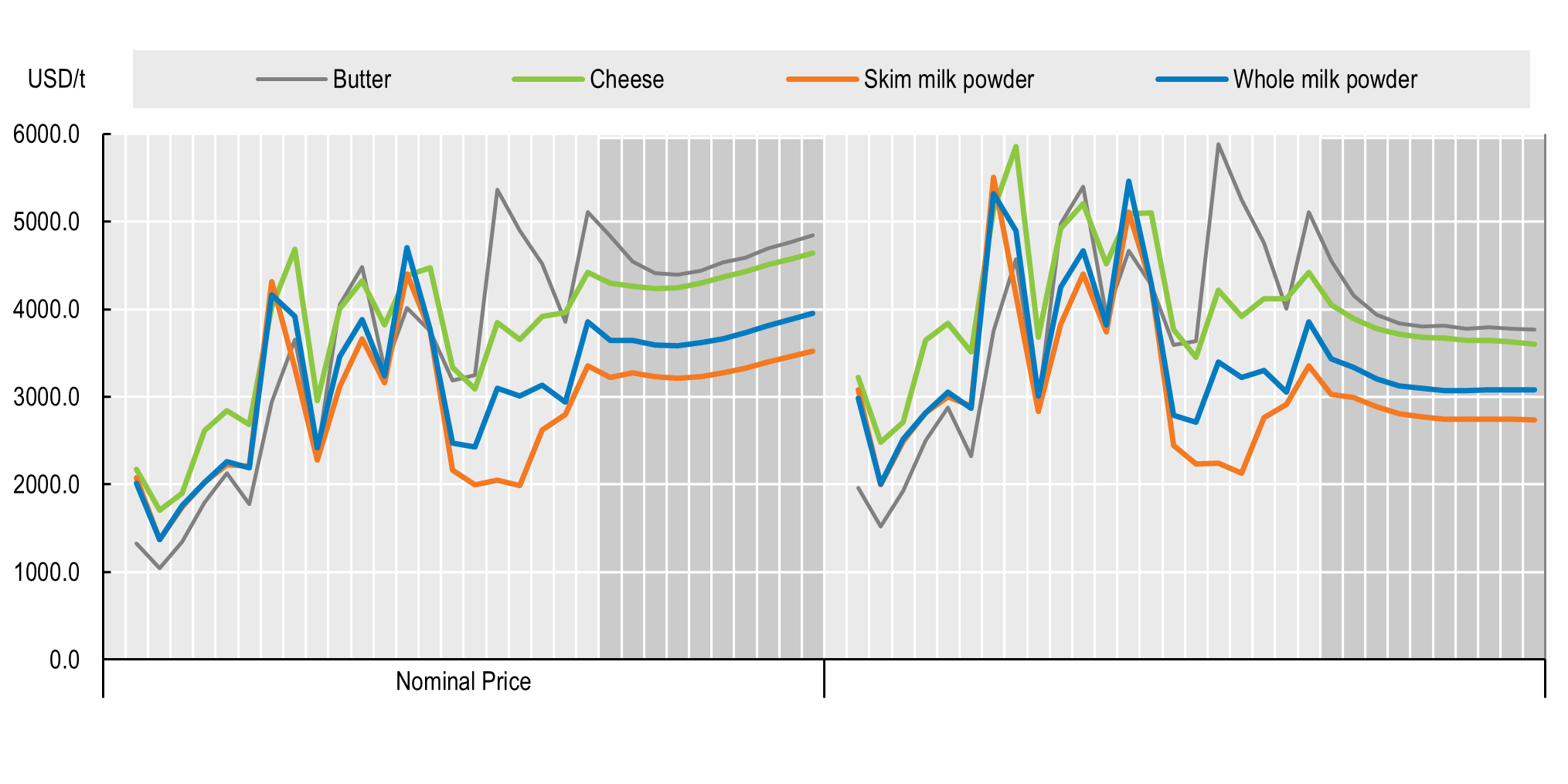
Future scenarios the dairy market should be ready to face
An outlook on the main performance and drivers of the dairy market within the next 10 years.
Milk and dairy products have been playing a leading role in supplying us with essential nutrients. Yet, their demand and consumption under constant evolution have always been affecting milk production and dairy farming. So, what is going to happen next and how will the dairy market evolve?
Along with customers’ changing habits and needs, the dairy sector has to deal with several environmental, political, and economical factors that further shape its growth.
With this in mind, in this blog episode, we explore the main trends in global milk consumption and the key challenges our sector will face in the next 10 years to understand how the dairy sector is currently responding and what it should be prepared to tackle.
Current and future scenarios for production and consumption
Against any forecast, the dairy sector promptly reacted to the challenges stemming from the COVID-19 pandemic, despite some difficulties in transportation, value chain, and demand.
In 2021, milk production grew by 1.1% globally, reaching about 887 Mt. The highest peak was achieved in India, the main country for milk production, where it rose by 2.2%, although only a marginal part of this milk is traded. Imports reached 10 Mt, led by Chinese demand, in which cheese, milk powders, and whey powders accounted for the majority. Import demand was supported by New Zealand, the EU, and the US, the three main exporters.
Global consumption of fresh dairy products is expected to grow by 1.4% annually, thanks to growing demand from India and Pakistan, affected by increasing income and population.
As far as milk solids, annual consumption depends on income and regional preferences:
- In high-income countries, a growth of 0.4% is expected, mainly driven by processed products.
- In lower-middle ones, it is expected to increase by 2.0%.
- In low-income ones, it will achieve a growth of 1.5%.
Europe and North America are shifting from fresh dairy products to dairy fats, possibly because of the recent promotion of their benefits for health. Cheese consumption is expected to increase not only in these two countries but also in South Asia. This country, along with Africa and the NENA, is also expected to see an outgrow in consumption compared to production, with a consequent increase in imports.
Skim Milk Powder (SMP) and Whole Milk Powders (WMP) will continue to be mainly used in confectionery, bakery, and infant formulae, with a small share in animal feed.
Global production is expected to grow by 1.8% annually, mainly driven by yield growth rather than herd growth and with peaks in Southeast Asia and North Africa.
In the EU, milk output is expected to grow at 0.5%, with a growing share of milk from organic production systems, while in New Zealand, annual production is expected to grow by 0.4%.
In the US, the growth in production is driven by further improvements in efficiency with consequent yield increases.
In Africa, larger herds will determine growth in production, further supported by milk from small ruminants.
At a global level, 30% of milk will be further processed, with a predominance of dairy products in high-income countries, and fresh dairy products in lower-middle and low-income countries. In these two groups of countries, milk production is expected to grow by 40% and 43%, respectively.
Butter production will increase by 1.9%, with significant demand from Asia, the EU, and the US. SMP will follow with 1.8%, WMP with 1.5%, and cheese with 1.1% annual growth.
World dairy trade is expected to rise by 15%, up to 14.3 Mt in 2031. SMP will see the strongest growth at 1.7% p.a., followed by cheese at 1.6%, and whey powder at 1.5%.
The US, EU, and New Zealand will mostly tackle this growth through higher exports, as the graph below shows.

Graph 1 – Exports of dairy products by region. Source: OECD/FAO (2022), ''OECD-FAO Agricultural Outlook'', OECD Agriculture statistics (database), http://dx.doi.org/10.1787/agroutl-data-en.
When it comes to imports, the main countries are Near East and North Africa, high-income countries, Southeast Asia, and China.

Graph 2 – Imports of dairy products by region. Source: OECD/FAO (2022), ''OECD-FAO Agricultural Outlook'', OECD Agriculture statistics (database), http://dx.doi.org/10.1787/agr-outl-data-en.
The last point to be analyzed is price. Due to the combination of the dominance of a few exporters and restrictive trade policies, price volatility is rather high.
As the graph below demonstrates, the gap between the price of butter, which is higher as a consequence of the bigger stronger demand, and SMP is foreseen to remain.
After an increase in the near future, in the long term, prices are expected to decline.

Graph 3 - Dairy product prices. Source: OECD/FAO (2022), ''OECD-FAO Agricultural Outlook'', OECD Agriculture statistics (database), http://dx.doi.org/10.1787/agr-outl-data-en.
After this introduction on the current and future performance of the dairy market within the next 10 years, do not miss our next Blog episode, to find out the key drivers that affect these results and the uncertainties to keep an eye on, as they could potentially disrupt the dairy market.
Sources:
- 4 global trends driving dairy demand – Dairy Global, 2022
4 global trends driving dairy demand
- Can milk boost cognition? Birch – Kansas University Medical Center, 2023
- Dairy market trends for 2023 Hanson – edairynews, 2023
- Dairy’s role in supporting a healthy immune system – IDF, 2020
Dairy’s role in supporting a healthy immune system
- Milk, or a plant-based “milk”: what’s the nutritional difference? Morais – edairynews, 2023
Milk, or a plant-based “milk”: what’s the nutritional difference?
- Health benefits of dairy – IDF, 2019
- OECD-FAO Agricultural Outlook 2022-2031 OECD/FAO - OECD Publishing, Paris, 2022
OECD-FAO Agricultural Outlook 2022-2031
- What’s ahead for the dairy industry Adams, Maluf, Meilhac, Uchoa – McKinsey & Company, 2021
What’s ahead for the dairy industry
